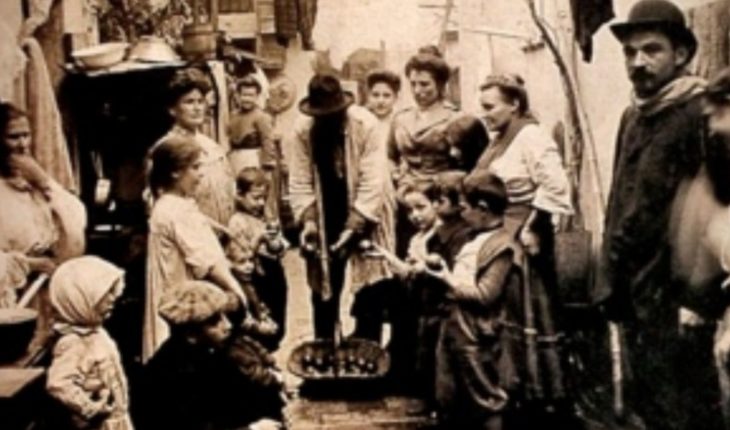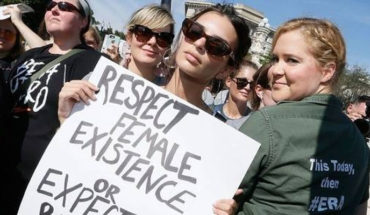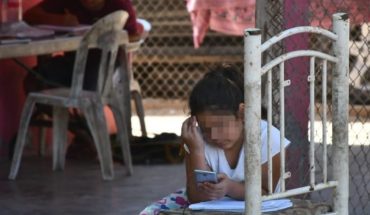It was the summer of 1871, and the first cases of yellow fever were concealed by orders of the authorities, until the death penalty could no longer be concealed.
The infected were said to have come from Paraguay and Corrientes.Y to try to stop a major outbreak, a quarantine was established in the port of ships from Brazil and Paraguay.
But then-President Domingo F. Sarmiento allowed the arrival of two ships, without any contemplation or collection.
At that time convents were usual, a place more conducive to the development of diseases and the spread of diseases.
The renowned Doctor Juan Antonio Argerich, was one of the first to attend to a family with the disease, of which two of its members died.
But when it came to certifying the deaths at the request of police chief Enrique O’Broman, they said that the cause of the death was inflammation in the lungs and gastroenteritis
Already entering the month of February the deaths were in crescendo and the rumor took over the city and the inhabitants began to get restless.
But Buenos Aires was a party and the carnivals were to be held, the government in no way wanted to interrupt the fuss of the people and the occasion to celebrate.
It was then a young doctor named Eduardo Wilde who took the reins and wrote a squela to the newspaper “La República” days before the start of carnival. Reporting that the recent deaths were due to yellow fever.
The director of the newspaper, who until then denied the existence of the plague. He titled the next copy with a word that society wasn’t going to ignore, Terror!
By the time the carnivals ended, the deaths went from 40 to 100 per day and government authorities residing in Buenos Aires, including The First Command Sarmiento along with 70 ministers and Vice President Alsina escaped by train.
They were not heroes, they were not prosperous, they were “drones” according to the newspaper “The Nation” who ran from their obligations when the city needed them most, leaving it desolate and with a chilling panorama.
In front of this painting, a group of “braves” set up a popular health commission, which appoints José Roque Pérez as president and as Vice-President the Journalist Héctor Varela. It was also made up of Bartolomé Mitre, Manuel Quintana, José C. Paz, among others.
Only two newspapers remained in the trench “The Press” and “The Nation” that daily titled and named the President’s conduct as “coward” in front of those who decided to stay and help.
The plague not only took the poorest, it wiped out everything in its near. This is how commission president José Roque Pérez and doctor Manuel Argerich died, who were immortalized in Juan Manuel Blanes’ famous painting “An episode of yellow fever in Buenos Aires”.
(“An episode of yellow fever in Buenos Aires, “work by Manuel Blanes)
It is estimated that 8% of the population of the port population died as a victim of the epidemic
In a city that in normal times died an average of 20 people a day, during the pandemic the number hondate about 500 people per day.
The population was reduced to one-third due to the exodus. Those who stayed to help not only risk their lives to the disease but also to the growing thefts, slits and chaos in what had become Buenos Aires.
The Florentino Ameghino Park where today stands a monument that pays homage to doctors. It was the then so-called South Cemetery. Which was full of bodies and a year later had to be shut down after receiving 15,000 deaths.
On the other hand, the northern cemetery, now better known as “Recoleta” was also overflowing with deaths and led to the creation of the “West” cemetery that today we know as “la chacharita”.
(Monument to the fallen Yellow Fever, by Manuel Ferrari)
The young doctor Eduardo Wilde years later would remember the tragic days “Yellow fever sprouted in Buenos Aires brought from I do not know where. There was a lot of discussion about whether it was black vomiting, I wrote an article proving that the disease was yellow fever and of the best quality. People started emigrating and even many doctors, I stayed in it and did my duty by attending everyone for free”
Ten years later in 1881, a Cuban doctor Carlos Finlay discovered that the disease was transmitted by the Aedes mosquito.
And in 1937 Max Theiler, working for the Rockefeller Foundation, developed the yellow fever vaccine.
In a different context, at a different time, but with similar uncertainties, in the face of an unknown virus. Today we can affirm that the compliance with the government’s measure of social isolation, preventive and mandatory to flatten the contagion curve, is at best the right decision.
In 1871 the disease was hidden, and the only measures that were taken were the panic and flight of those who had to make decisions.
That’s why it’s essential to know history so as not to repeat mistakes. Today it is hopefully hoped that the COVID-19 vaccine will be ready before the end of the year
Even if the deaths are irreparable and the extent of economic destruction we do not know how much damage it will cause, the effort of all together makes us better people.
And it’s nice to know that doctors are the brave ones who take to the streets with the same uncertainty that the battlers had in 1871, and face the unknown to fight him.
That’s why for them, and for all #quedateencasa.





